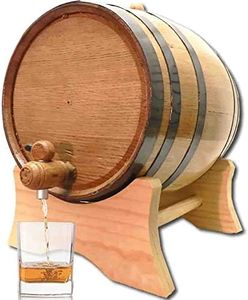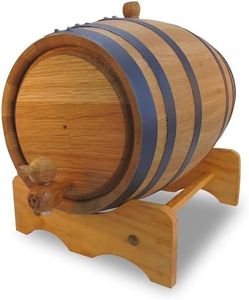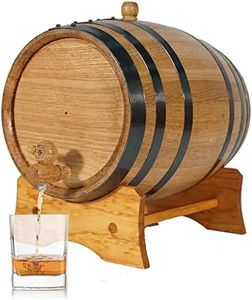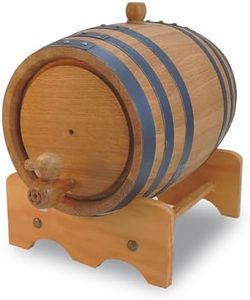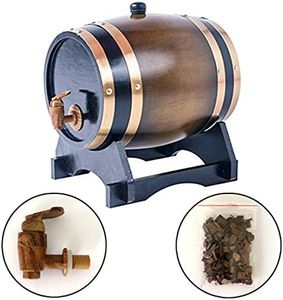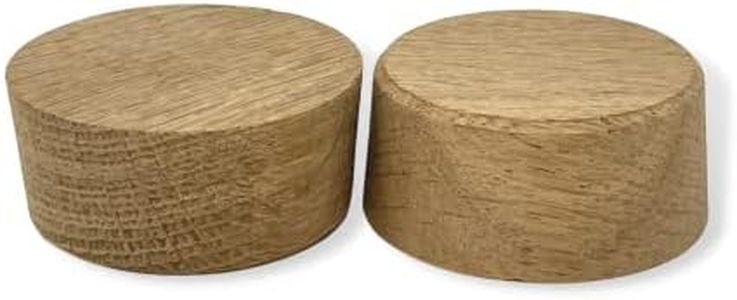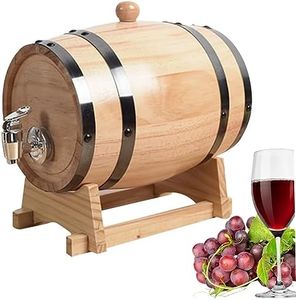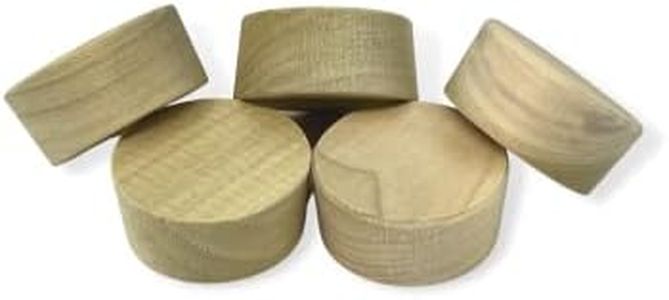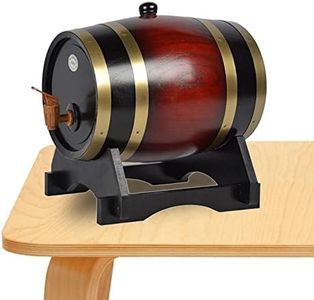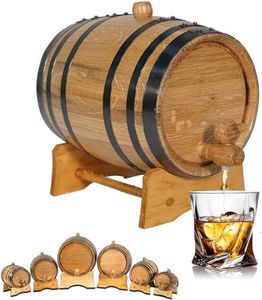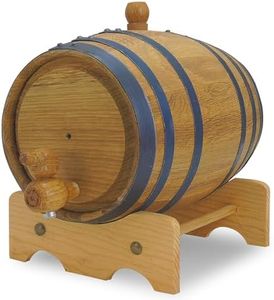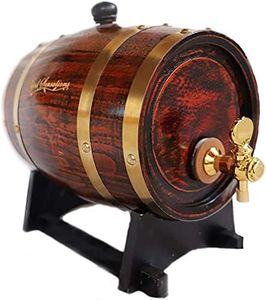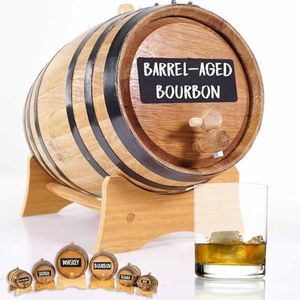We Use CookiesWe use cookies to enhance the security, performance,
functionality and for analytical and promotional activities. By continuing to browse this site you
are agreeing to our privacy policy
10 Best Oak Aging Barrels
From leading brands and best sellers available on the web.Buying Guide for the Best Oak Aging Barrels
Choosing the right oak-aging barrel is essential for anyone looking to enhance the flavor, aroma, and texture of beverages like wine, whiskey, or even beer. Oak barrels contribute unique qualities to the aging process, and the right choice depends on your specific needs, batch size, and taste preferences. It's helpful to understand a few key characteristics that influence how a barrel will affect your finished product, so you can confidently select an option that complements your goals.Barrel SizeBarrel size refers to the capacity of the oak barrel, typically measured in liters or gallons. This is important because the size controls the surface area of oak that comes in contact with your beverage, which in turn affects the speed and intensity of the aging process. Smaller barrels provide a higher surface area to volume ratio, accelerating aging and imparting oak flavors faster, while larger barrels age drinks more slowly and gently. If you want quicker results or have a smaller batch, a smaller barrel is suitable, whereas larger batches or longer, gentler aging are best in bigger barrels.
Type of OakThe type of oak used—most commonly American, French, or Hungarian—significantly affects the flavor profile the barrel imparts. American oak tends to give stronger notes of vanilla and sweetness, French oak is known for subtlety and spicier nuances, while Hungarian oak lands somewhere in between. When choosing, think about the flavor you want to highlight in your beverage: bold and sweet, or more refined and spicy.
Toasting LevelToasting level describes how much the inside of the barrel has been heat-treated (or 'toasted'). This process releases different flavors; lighter toasting emphasizes woody and tannic qualities, while heavier toasting brings out caramel, vanilla, and smoky notes. If you prefer a taste with more oak and tannin, lighter toast is better, but for richer, sweeter flavors, a medium or heavy toast is preferable.
Barrel Age or ConditionBarrels can be new (never used), once-used, or multiple-use. New barrels impart the most flavor and tannins, while used barrels give subtler, softer notes and are preferred when you want less oak influence. Think about your beverage—if it needs strong oak characteristics, go new; for softer touches or multiple aging rounds, used barrels might suit you better.
Barrel ConstructionHow well the barrel is constructed affects both the aging process and the prevention of leaks or contamination. Look for well-made barrels with tight staves and quality metal hoops. Good construction is crucial for aging because it ensures a proper seal while still allowing for the right amount of oxygen exchange, which helps develop complexity in your beverage. If you are new to barrel aging, it’s wise to choose barrels known for solid, leak-free construction.
